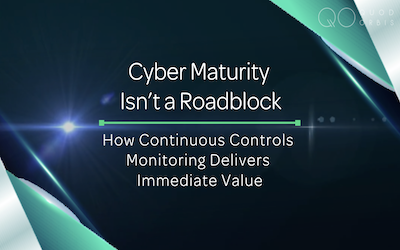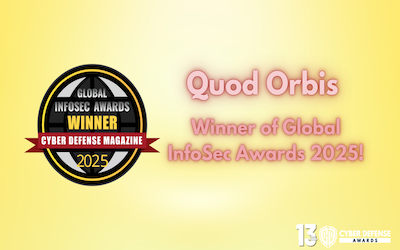There is little debate about most facets of an effective cyber security strategy. Should it dovetail with the IT strategy, for instance? Of course. Should it complement the overall business strategy? Without doubt. Should it secure as many IT and data assets, end points and services as is pragmatically possible? Naturally.
And so on, and so on. Few security professionals would disagree with such basic tenets of cyber security.
But there’s one area of cyber strategy where unanimity doesn’t prevail. And it’s this: how best to obtain reassurance that the cyber security strategy is progressing to plan and coming to fruition? Are we on course to meet the goals and objectives or are we off course?
Meaningful metrics and milestones
Clearly, there will be metrics to assess, milestones to reach, and meetings at which these metrics and milestones are reviewed. Any self-respecting cyber security strategy has those.
But here, doubts and differences start to emerge. Are the metrics granular enough? Are they even the right metrics? Is a given milestone a genuine contribution to enhanced cyber security, or chosen simply because it is a box that is easy to tick?
Or, put another way, are the meetings to assess the progress of the cyber security strategy looking at reporting points that are genuinely meaningful, or just convenient?
A deeper dive
As an example, consider a milestone couched in terms of the establishment of a Security Information and Event Management (SIEM) capability, as a pivotal function of the Security Operations Centre (SOC). Clearly, an organisation either has a SIEM, or it doesn’t. And from that point of view, the existence—or not—of a SIEM is a perfectly valid milestone.
But is the SIEM operating effectively and configured correctly? Is it delivering what it is supposed to be delivering? Is it actually even operating at all?
These are more searching questions. And also questions to which the answers, in terms of an organisation’s security posture, are far more meaningful. Milestones expressed in terms of questions such as these are far more informative, and provide far more insight into the genuine progress that is—or isn’t—being made towards enhanced cyber security.
Granular data, firmer evidence
But suppose that it was possible to express—and monitor—progress in terms of such granular detail. And suppose that it was possible to do that continuously, in almost real-time.
Suppose no longer: enter Continuous Controls Monitoring (CCM).
At its simplest, CCM is easily understood. In essence, it is continuous, real-time monitoring of an organisation’s security controls and systems, via its data and telemetry. It instantly provides value by enabling the rapid maturity of an organisation’s cyber security strategy.
Rightly, CCM is being regarded as transformative. Forget monthly meetings to track milestones. Instead, via telemetry, organisations using Continuous Controls Monitoring obtain real-time monitoring of their security controls and systems of choice— at very granular level, and via easy-to-use, highly visual dashboards.
In short, doubts and differences disappear. The ongoing development of an organisation’s cyber security isn’t guessed at—it is seen, known and understood in fine detail, underpinned by hard evidence and data.
Beyond the basics
Nor is CCM limited to the interrogation of devices and systems via telemetry. The principles of Continuous Controls Monitoring can be extended to other areas, and can be augmented by other sources of data.
Cyber security training for employees, as part of the wider security strategy, for instance. How effective is such training? Few organisations have much of a clue, and certainly not in real-time.
Yet if cyber security training is being effective, then organisations should expect to see a lower percentage of click-throughs to phishing emails, for instance. This, in addition to the complimentary higher pass rate on cyber security sessions. Such things can be measured—and ceaselessly monitored.
Digging a little deeper, we could for example measure and compare security training ‘passes’ or ‘fails’ for those directly responsible for sensitive data – such as senior personnel or perhaps those with many administrative privileges – as the behaviour of those individuals clearly poses a higher level of risk to the business.
But it doesn’t stop with cyber training. Take all, or any, of your cyber investments. With monitoring you can start to look at whether the people or the process around the ‘product’ in which you have invested are performing adequately. Are SLTs being adhered to? Is risk prioritised? All of this becomes possible, because now you can see it.
Having a complete understanding of your cyber hygiene, as enabled by monitoring, means a better ‘culture of security’ and better investment planning. Whether it’s highlighting a blatant gap like no vulnerability management solution at all, or lacking the resource or time to act upon the alerts (a very big NIST ‘no-no’, to use just one example), means the scope for improvement and assurance is huge.
That reference to a ‘culture of security’ is key. Ultimately, it’s about how security is handled or prioritised in the business. It’s not just “Oops, our AV isn’t up to date”; monitoring can really shape an overall security posture, the roadmap of security, and the on-going efficacy of that security.
A better and more mature solution
The bottom line is clear. If your organisation is serious about its cyber security aspirations—and it ought to be—then CCM merits equally serious examination.
It is, we believe, a whole new way to approach and mature a cyber security strategy.
Critically, on a practical level it’s also relatively easy to get started. With the Quod Orbis managed platform we can start by identifying critical controls and metrics, growing out over time to include wider areas, and helping you track and monitor as you go. This is vital for the many organisations who cite a lack of controls being measured or documented as an acknowledge sign of immaturity.
As always, please get in touch if you’d like to know more.




















